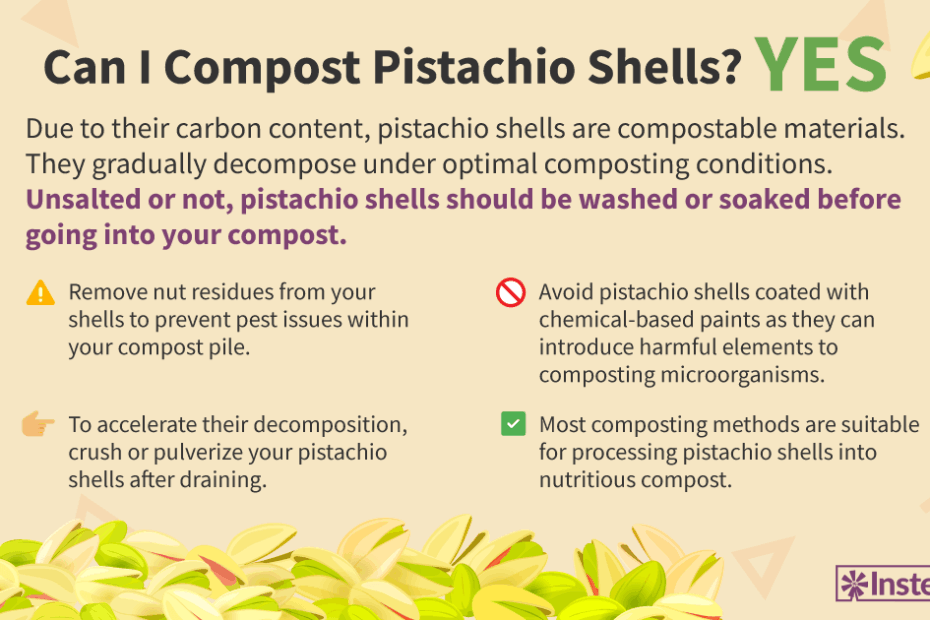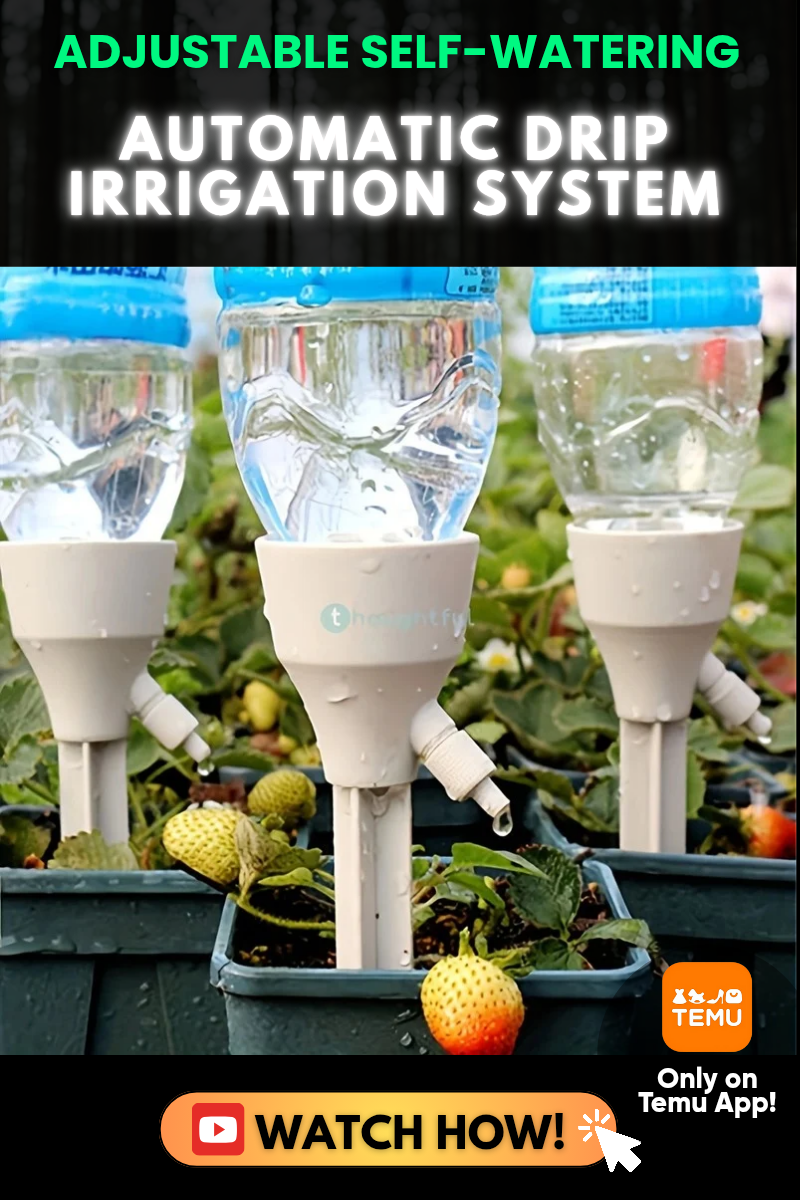
Unraveling the mysteries of sustainable composting has never been more exciting! Among the many curious objects that find themselves in our compost bins, the humble pistachio shell begs the question: can it join the ranks of decomposable heroes, or is it destined for another fate? As we delve into the composting universe, prepare to uncover the truth about these enigmatic shells and their rightful place in the realm of sustainable waste management. Brace yourselves, dear readers, as we embark on an adventure to discern whether pistachio shells can take the plunge into the magical world of composting. With hypothesized answers and a pinch of wonder, we aim to guide you through the delightful realm of composting pistachio shells!

Composting Pistachio Shells: Understanding the Feasibility and Benefits
Have you ever wondered what to do with the leftover pistachio shells after enjoying a delicious snack? Well, the good news is that composting pistachio shells is not only feasible but also offers a range of benefits for you and the environment. By diverting these shells from the trash, you can contribute to reducing waste and create a nutrient-rich compost that will benefit your garden. Let’s delve deeper into the feasibility and advantages of composting pistachio shells.
Feasibility – pistachio shells are typically composed of cellulose, lignin, and small traces of oil. While they may take a bit longer to decompose compared to other organic materials, they can eventually break down when provided with the right conditions. Shredding the shells or crushing them into smaller pieces can speed up the decomposition process. Additionally, the high carbon-to-nitrogen ratio of pistachio shells makes them a valuable addition to compost piles, helping to balance the nutrient content.
Features and Tips for Composting Pistachio Shells:
| Features |
Tips |
| Rich in carbon |
Crush or shred shells for faster decomposition |
| Adds texture to compost |
Combine pistachio shells with other organic materials |
| Create airflow |
Turn the compost pile regularly |
Benefits – composting pistachio shells offers various advantages for both your garden and the environment. Firstly, it reduces waste, ensuring that these shells don’t end up in landfills where they contribute to the generation of methane gas, a potent greenhouse gas. Instead, by composting them, you can turn them into a valuable resource that improves soil health and fertility. Furthermore, the addition of pistachio shells to your compost pile can enhance moisture retention and increase porosity, allowing for better aeration and drainage in your garden. Say goodbye to waterlogged plants and welcome healthy and flourishing ones!
Loading... Seconds Left for
Miniature Orchid Terrarium Gallery!

So, the next time you find yourself craving pistachios, go ahead and indulge. Remember, the shells can be transformed into a sustainable gardening ally through composting! With a little bit of effort, you can reduce waste, improve soil quality, and create an eco-friendly cycle of nourishment for your plants.

When it comes to composting, the question often arises: can I compost pistachio shells? The answer is a resounding yes! Pistachio shells are a natural material that can be effectively composted, contributing to the decomposition process and reducing waste.
The decomposition process of pistachio shells in compost is relatively slow, but the shells will eventually break down and provide valuable organic matter to the soil. During the decomposition process, microorganisms in the compost heap will work their magic, breaking down the shells into nutrient-rich humus. This process may take anywhere from several months to a year, depending on various factors such as temperature and moisture levels.
To successfully compost pistachio shells, there are a few features and tips to keep in mind:
Table: Feat
ures and Tips for Composting Pistachio Shells
| Feature/Tips |
Description |
| Quantity |
Pistachio shells can be added to the compost in moderate amounts. Too many shells may slow down the decomposition process. |
| Ground or Chopped |
Grinding or chopping the shells before adding them to the compost heap can speed up decomposition. |
| Layering |
Layer the pistachio shells in the compost bin with other organic materials such as leaves or grass clippings. |
Composting pistachio shells not only provides an environmentally friendly way to dispose of them but also adds valuable nutrients to your compost pile. From reducing waste to enriching the soil, composting pistachio shells is a win-win for both your garden and the environment. So go ahead, toss those shells into the compost bin and watch as nature works its magic.

Can You Compost Pistachio Shells? Tips for Successful Composting
If you’re passionate about composting and are wondering if those leftover pistachio shells from your snack can be composted, we’ve got great news for you! Pistachio shells are indeed compostable and can be added to your compost pile. However, there are a few tips and tricks to ensure successful composting with pistachio shells.
Firstly, it
’s important to note that pistachio shells take longer to break down compared to other organic materials. This is because they are quite hard and woody, so they need a bit more time to decompose fully. To speed up the process, it’s recommended to crush or grind the shells before adding them to your compost. This will help to increase the surface area, allowing for faster decomposition.
| Key Features |
Tips |
| Hard and woody shells |
Crush or grind shells to speed up decomposition |
| Slow decomposition |
Mix pistachio shells with other compostable materials to balance the carbon-to-nitrogen ratio |
| Potential acidity |
Monitor pH levels and add alkaline materials if necessary |
Additionally, pistachio shells can be slightly acidic, so it’s important to consider the pH levels of your compost. Regularly monitor the pH levels and if necessary, add alkaline materials such as crushed eggshells or agricultural lime to balance the acidity.
Incorporating pistachio shells into your compost can provide essential carbon and add texture to your final product. Remember to ensure a good balance of carbon-to-nitrogen ratio by mixing the shells with other compostable materials like food scraps, yard waste, or coffee grounds. With a bit of patience and care, your compost will thrive with the addition of these nutrient-rich pistachio shells!
decoding="async" class="kimage_class" src="https://up-gardening.com/wp-content/uploads/2023/10/photo-1614802104805-c884cf10f6f9.jpg" alt="Turning Pistachio Shells into Nutrient-Rich Compost: Techniques and Considerations">
Turning Pistachio Shells into Nutrient-Rich Compost: Techniques and Considerations
When it comes to composting, many people wonder whether or not pistachio shells can be added to the pile. Well, the answer is a resounding yes! Pistachio shells can indeed be composted, and they can even contribute to creating a nutrient-rich compost for your plants and garden. However, there are a few techniques and considerations to keep in mind to ensure successful composting.
Firstly, it is important to remember that pistachio shells take a longer time to break down compared to other organic matter. To expedite the decomposition process, it is recommended to crush or grind the shells into smaller pieces before adding them to your compost pile. This will help speed up their breakdown and ensure that they mix well with the other compost materials.
<
table style="width: 100%">
Tips for Composting Pistachio Shells
Features of Pistachio Shell Composting
- Avoid adding large quantities of pistachio shells at once.
- Mix the shells with other compostable materials such as food scraps and yard waste.
- Monitor the moisture levels in your compost pile; pistachio shells tend to absorb moisture, so you may need to add extra water if necessary.
- Pistachio shells provide a good source of carbon, which helps balance the carbon-to-nitrogen ratio in your compost.
- The shells add texture and structure to the final compost, enhancing its ability to retain moisture.
- Composting pistachio shells reduces waste and contributes to a more sustainable gardening practice.
Frequently Asked Questions
Q: Can I throw my pistachio shells in the compost bin?
A: That’s the shell truth! Pistachio shells can definitely join the composting party.
Q: What makes pistachio shells such compost champions?
A: These little heroes are rich in nutrients like calcium, potassium, and phosphorus, making them a valuable addition to your compost mix.
Q: Any tips for composting pistachio shells successfully?
A: Absolutely! To ensure smooth composting, it’s best to crush or grind the shells into smaller pieces. This will speed up the decomposition process, leaving you with nutrient-rich compost to feed your plants. As we conclude this nutty journey through the composting world, we arrive at the lingering question: can I compost pistachio shells? With empty bags strewn across the kitchen counter and shells piling up, it’s time to make a conscientious choice.
While some
may brand pistachio shells as mere waste, we have unveiled their dormant potential. These petite green husks harbor more than just a tasty treat; they are nature’s secret weapon for a thriving compost pile. From their robust structure to their earthy composition, pistachio shells possess the power to enrich our gardens and reduce waste.
However, before tossing them into the compost bin without a second thought, consider a few vital factors. Firstly, remember to break down those shells into smaller pieces for faster decomposition. Their firm nature may prolong the composting process, but with a little patience and some occasional turning, they will break down over time.
Additionally, be cautious with the quantity of shells you add to your compost mix. While a moderate amount of pistachio shells will work wonders, an overwhelming load may tip the balance and hinder the composting process. Moderation is the key here, allowing for a harmonious blend of nutrients that will yield delightful results.
On the flip
side, pistachio shells present an embodiment of sustainability and resourcefulness. By composting these shells, we not only nurture our gardens but also contribute to a more eco-friendly lifestyle. In a world plagued by excessive waste, every small effort counts, and composting pistachio shells is a tangible step towards a greener tomorrow.
So, dear gardeners, as you embark on your composting adventure, don’t let those pistachio shells go to waste. Embrace their potential, rejoice in their natural beauty, and bring them closer to the soil they were destined to nourish. Remember, the choice is yours to make, but here’s to hoping you’ll see the magic in composting these humble green shells.
May your compost piles thrive, your plants flourish, and your love for our dear planet continue to grow. Happy composting!
Hello! I'm Jessica Owen, an avid gardener and proud contributor to Up-Gardening.com. Gardening is my passion, and I'm delighted to share my green-thumb experiences with you. From planting tips to nurturing blooms, I'm here to help you cultivate your own slice of paradise. Let's grow together in the garden!
Latest posts by Jessica Owen
(see all)




